Praying Mantis Or Preying Mantis?
November 18, 2019
by Kit Werner, senior director of communications.
distinguishing between native and non-native mantids
Gardeners have long appreciated the pest-control benefits of the Carolina praying mantis, which sits patiently on plants, front legs raised as if in prayer, waiting for its next meal. Arguably, they could also be called preying mantids for their voracious appetite. However, the native species Stagmomantis carolina is in decline due to competition and predation by their non-native cousins, the Chinese and European mantids.
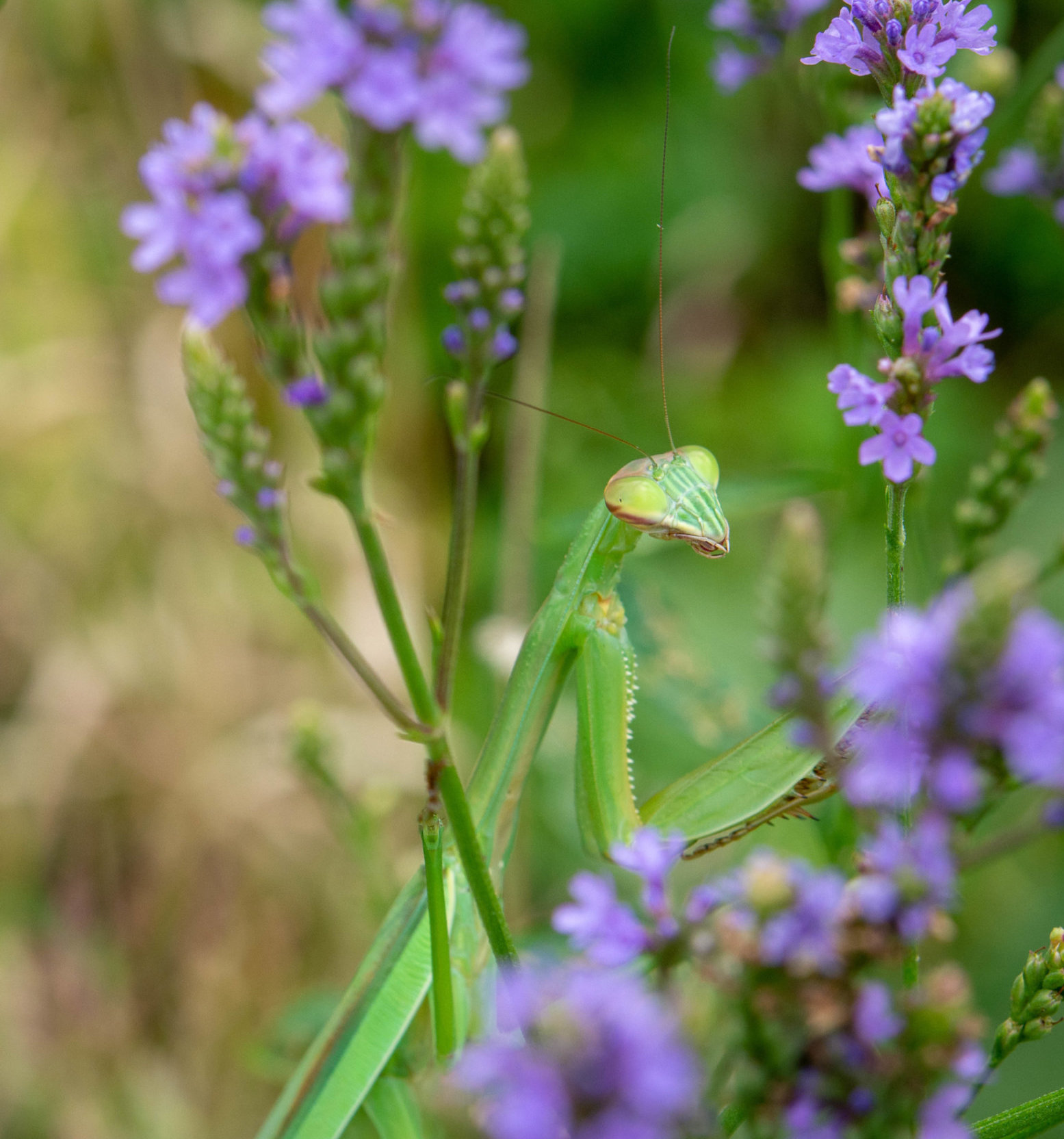
Invasive Chinese mantis at Stoneleigh: a natural garden
photo: Scott Beadenkopf
As its name implies, the Chinese mantis (Tenodera sinensis) is native to Asia and was accidentally introduced to North America at a nursery in Mt. Airy, PA. The insect is twice the size of the native Carolina mantis and is an indiscriminate predator. It feeds on everything from pests to beneficial bugs like Monarch butterflies, bees, small reptiles and amphibians, native praying mantids, and even hummingbirds!
Though smaller than the Asian species, European mantids (Mantis religiosa) are also damaging to the ecology. They were introduced to the U.S. decades ago as a means of controlling another invasive bug, the gypsy moth caterpillar.
All three species can vary in color from brown to green, making it difficult to distinguish them from one another. Their egg cases—also called oothecae—are somewhat more distinct among the species.
- Carolina mantis:
The native species of praying mantis is between two and three-and-a-half inches long, with a relatively long thorax. The head and thorax together make up almost half the body. Its wings are relatively short, not reaching the tip of the abdomen. Its color ranges from mottled gray-brown to yellow-green with bright green wing covers and legs.
Carolina mantis (Stagmomantis carolina)
©Colin PurringtonCarolina mantids form relatively smooth, elongated, teardrop-shaped oothecae with a central portion that is lightly colored. They can be found on branches, tree trunks, rocks, and even buildings.
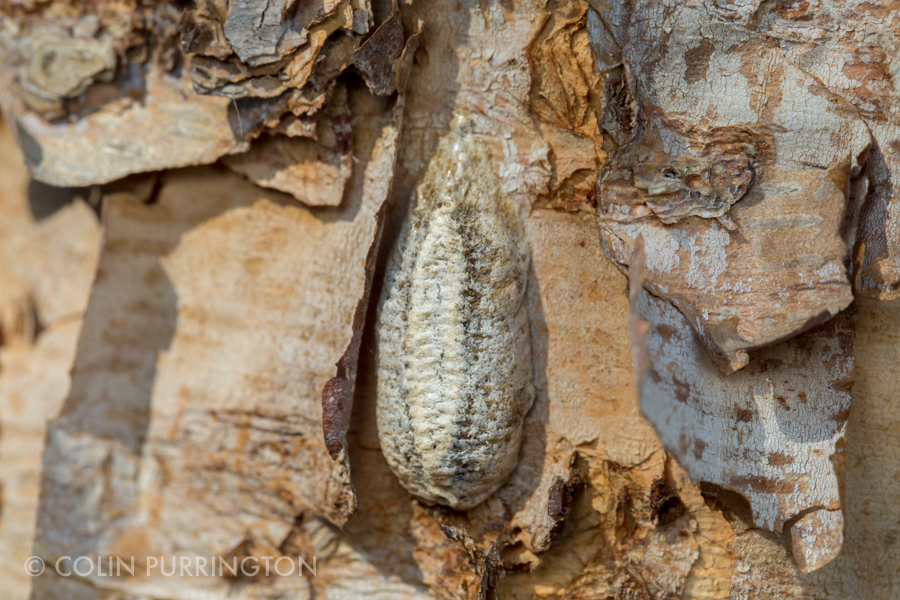
Carolina mantis (Stagmomantis carolina) ootheca
©Colin Purrington - Chinese mantis:
Reaching lengths of five inches, the Chinese mantis is larger than the other two mantids in our region. It is light green or brown with long wings extending beyond the end of the abdomen. Light vertical stripes adorn the head between the eyes.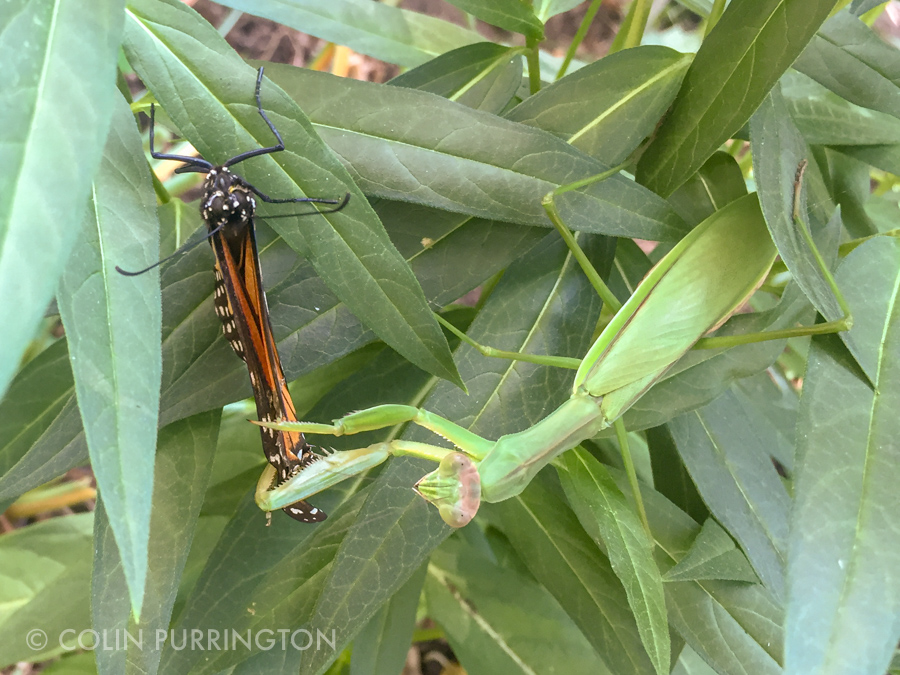
Monarch butterfly captured by a Chinese mantis (Tenodera sinensis)
©Colin PurringtonTheir oothecae are a little smaller than ping pong balls and roundish in shape. They are uniform in color and their texture is almost like Styrofoam.
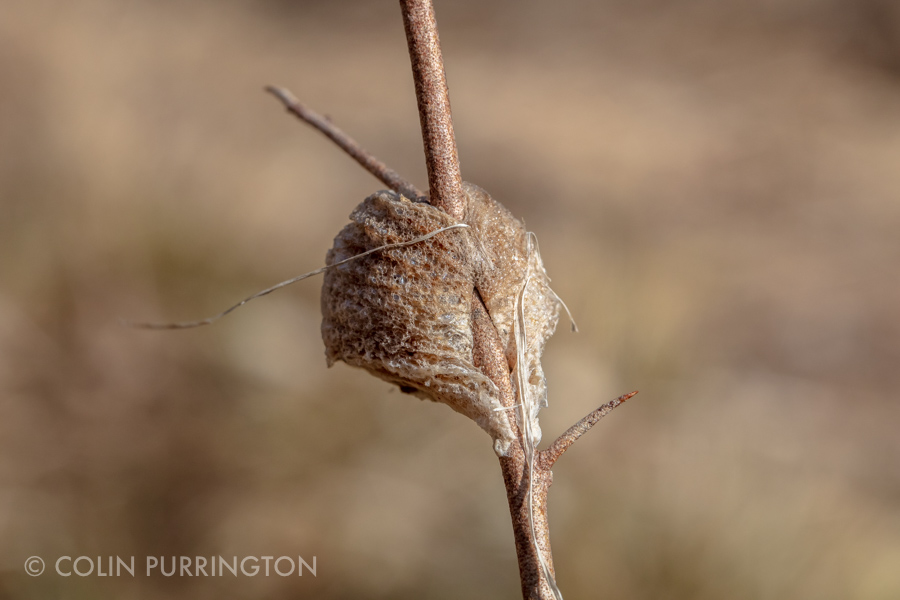
Chinese mantis (Tenodera sinensis) ootheca
©Colin Purrington - European mantis:
The European mantis is about four inches long as an adult and is generally green in color though some are light brown in color. The pattern on the inside of the front legs is their most obvious feature. At the top of the legs there is a black spot with a white dot in the center. There are also yellow dots on the forearm and lower section of the front legs.
European mantis (Mantis religiosa) ©Colin Purrington
The egg case is similar to that of the Carolina mantis but tends to be uniformly pale in color.
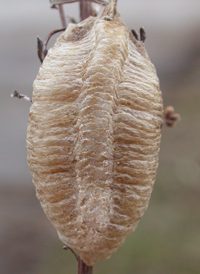
European mantis (Mantis religiosa) ootheca
photo: Cape May Wildlife Guide
Invasive mantids eat butterflies, native bees, honey bees, small birds, and also the native mantid, so many people chose to destroy the non-native egg cases when they find them. Colin Purrington, scientist and former teacher of evolutionary biology at Swarthmore College, offers some suggestions on how to do so:
- Give them to a neighbor who has chickens
- Give them to a neighbor who has a pet tarantula, snake, lizard, or fish
- Put them in a freezer for a week
- Step on them
Purrington implores, “Whatever you do, do not just relocate oothecae to some nearby field—that just transfers the problem to someplace where you can’t see the problem. If you simply cannot bring yourself to kill the eggs, ask somebody to do so for you.”
It’s important to be tell these species apart, especially if you opt to destroy non-native mantids. Purrington offers this helpful suggestion: “If you need help identifying an ootheca, I highly recommend posting a photograph on iNaturalist. If you post there, feel free to include my iNaturalist username (@colinpurrington) in your caption so that I can have a look. Not only will you get an answer from the iNaturalist community within a day or two, your submission helps scientists track the spread of invasive species.”
For more photos, check out the Cape May Wildlife Guide’s post here.
next post
Staghorn Sumac: A Species That Clones
October 10, 2019
Staghorn Sumac spreads happily and likes lots of sunlight. It’s an early woody plant to move into disturbed areas or poor soil.
